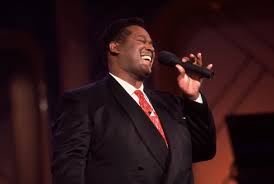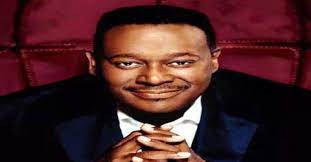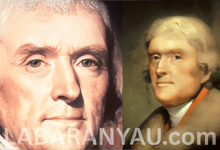
Luther Vandross Biography
Luther Ronzoni Vandross Jr., an American singer, composer, and record producer, passed away on July 1, 2005, on April 20, 1951. Vandross has sold more than 40 million records worldwide and is renowned for his smooth and soulful vocals. He won eight Grammy Awards, including Best Male R&B Vocal Performance four times, and eleven consecutive Platinum albums. Four Grammy Awards were given to Vandross in total in 2004, including the Song of the Year Grammy for the song “Dance with My Father,” which was recorded not long before he passed away.
On records by performers like Roberta Flack, Donny Hathaway, Todd Rundgren, Judy Collins, Chaka Khan, Bette Midler, Diana Ross, David Bowie, Ben E. King, Stevie Wonder, and Donna Summer, Vandross served as a supporting vocalist in the 1970s. He later rose to prominence as the lead vocalist for the band Change, whose 1980 Warner/RFC Records debut album, The Glow of Love, earned a Gold certification. Following his departure from the Beatles, Vandross secured a solo recording contract with Epic Records. His first solo album, Never Too Much, was released in 1981.
His top hits include “Never Too Much”, “Here and Now”, “Any Love”, “Power of Love/Love Power”, “I Can Make It Better” and “For You to Love”. Many of his songs, including “If This World Were Mine” (a duet with Cheryl Lynn), “Since I Lost My Baby”, “Superstar”, “I (Who Have Nothing)” and “Always and Forever” were versions of original songs by other musicians. His career included several successful duets, including “The Closer I Get to You” with Beyoncé, “Endless Love” with Mariah Carey, and “The Best Things in Life Are Free” with Janet Jackson.

Luther Vandross Early life
On April 20, 1951, in Bellevue Hospital in Manhattan’s Kips Bay district, New York City, Luther Ronzoni Vandross, Jr. was born. He was the second son and the fourth child of Luther Vandross, Sr. and Mary Ida Vandross. His mother worked as a nurse, and his father was an upholsterer and vocalist. Vandross grew up in the public housing complex known as the Alfred E. Smith Houses in Manhattan’s Lower East Side. With his own phonograph at age three, Vandross started teaching himself how to play the piano by ear.
When Luther was eight years old, his father passed away from diabetes. In 2003, Vandross composed “Dance with My Father” and dedicated it to him; the song’s title was inspired by his childhood memories and his mother’s memories of the family singing and dancing in the home. When he was nine years old, his family relocated to the Bronx. Vandross’ sisters, Patricia “Pat” and Ann, started taking him to watch Dionne Warwick and Aretha Franklin at the Apollo Theater and a theater in Brooklyn. Patricia performed in the singing group The Crests.as well as appearing on the tracks “My Juanita” and “Sweetest One”
After graduating from William Howard Taft High School in the Bronx in 1969, Vandross spent one and a half semesters at Western Michigan University before quitting to focus on his musical career.
Luther Vandross Career

Vandross established the first Patti LaBelle fan club while still in high school and served as its president. He also played with the band Shades of Jade, which once performed at the Apollo Theater. He frequently participated in the famed amateur night at the Apollo during his early career in show business. He was involved with the singles “Only Love Can Make a Better World” and “Listen My Brother” while he was a member of the theater workshop Listen My Brother. In late August 1969, the ensemble gave a performance in front of tens of thousands of people at the Harlem Cultural Festival. He then joined the ensemble in the pilot episode and additional episodes of Sesame Street’s first season in the years 1969–1970.
1970s: Back-up vocalist and first groups
In 1972 and 1973, Vandross contributed background vocals to Roberta Flack & Donny Hathaway and collaborated on Delores Hall’s Hall-Mark album. He collaborated with her on the song “Who’s Gonna Make It Easier for Me” and penned “In This Lonely Hour” as well.[Reference needed] After David Bowie and Vandross rewrote his song “Funky Music (Is a Part of Me)” as “Fascination” for the latter’s Young Americans (1975) album, Vandross joined Bowie on tour as a backup vocalist in September 1974. In 1975, Vandross composed “Everybody Rejoice/A Brand New Day” for the Broadway production of The Wiz.
In addition, Vandross provided backing vocals for a number of musicians, including Mandrill, Chic, and Todd Rundgren’s Utopia as well as Roberta Flack, Chaka Khan, Ben E. King, Bette Midler, Diana Ross, Carly Simon, Barbra Streisand, David Bowie, Gary Glitter, Sister Sledge, and Donna Summer.
Vandross was a member of the vocal group Luther in the late 1970s before making a name for himself as a solo artist. Anthony Hinton, Diane Sumler, Theresa V. Reed, and Christine Wiltshire, all former members of Shades of Jade, made up the quintet, which was signed to Cotillion Records. Despite the popularity of their singles “It’s Good for the Soul,” “Funky Music (Is a Part of Me),” and “The Second Time Around”, Luther’s self-titled Luther (1976) and This Close to You (1977), both of which were produced by Vandross, failed to chart. After Cotillion terminated the group, Vandross purchased the rights to those albums back, barring their re-release.
From 1977 to the beginning of the 1980s, Vandross also composed and performed commercial jingles for brands like NBC, Mountain Dew, Kentucky Fried Chicken, Burger King, and Juicy Fruit. In the late 1970s, he continued to have a prosperous career as a well-liked session vocalist. His song “Everybody Rejoice,” also known as “A Brand New Day,” was featured in a Kodak advertisement in the middle of the 1970s.
On the song “Hot Butterfly” by Gregg Diamond’s disco group Bionic Boogie from 1978, Vandross provided the lead vocals. He also made an appearance on Quincy Jones’ Sounds…and Stuff Like That!! in 1978, most notably alongside Patti Austin on the song “I’m Gonna Miss You in the Morning.” The main vocalist for the song “You Are the Sunshine of My Life” was performed by Vandross with the band Soirée. He also provided backing vocals for the album alongside Jocelyn Brown and Sharon Redd, who each had solo success. In addition, he performed the lead vocals on the 1979 song “See You in L.A.” from the Mascara album. Additionally, Vandross appeared on the 1979 album Let It In by the group Charme.
1980s: Change and solo breakthrough

As a featured performer with the renowned pop-dance act Change, a studio idea developed by French-Italian businessman Jacques Fred Petrus, Vandross experienced his breakthrough in the music industry. Vandross served as the lead vocalist on their 1980 successes “The Glow of Love” (written by Romani, Malavasi, and Garfield) and “Searching” (written by Malavasi). According to Vandross in a 2001 interview with Vibe, “The Glow of Love” is “the most beautiful song I’ve ever sung in my life.” The Glow of Love, Change’s debut album, had both tracks.
Originally planned to be on their second, hugely popular album Miracles in 1981, Vandross turned down the offer because Petrus didn’t provide enough money. Vandross’s choice resulted in a recording deal with Epic Records that same year, but he also contributed backing vocals to “Miracles” and the newly formed B. B. & Q. Band in 1981, which was developed by Petrus. With the release of his debut album, Never Too Much, during that busy year, Vandross launched his second effort at a solo career. It included a cover of the Bacharach & David song “A House Is Not a Home” in addition to the popular title tune.
His composition “Never Too Much” peaked at the top of the R&B charts. The bassist Marcus Miller, who played on many of the recordings and would later produce or co-produce a number of tracks for Vandross, began creating songs with him around this time period as well. Nat Adderley, Jr., a classmate of Vandross’s from high school, composed the arrangements for the Never Too Much album, beginning a long-lasting partnership.
In the 1980s, Vandross put out a number of popular R&B albums and kept up his session work by singing as a guest on bands like Charme in 1982. His previous albums frequently had more of an influence on the R&B charts than the pop charts. Two of Vandross’ singles from the 1980s peaked at No. 1 on the Billboard R&B singles charts: “Stop to Love” in 1986 and a duet with Gregory Hines called “There’s Nothing Better Than Love.” Jump to It, Aretha Franklin’s Gold-certified and Grammy-winning comeback album, was produced by Luther Vandross. He also worked on the 1983 album Get It Right, the follow-up.
When Dionne Warwick released her fourth album for Arista Records in 1983, How Many Times Can We Say Goodbye, Vandross had the chance to collaborate with his primary musical inspiration. He produced the record, wrote the songs, and sang on it. While the second song, “Got a Date,” was just a middling hit (#45 R&B/#15 Club Play), the title track duet reached No. 27 on the Hot 100 list (#7 R&B/#4 Adult Contemporary).
Vandross co-wrote and produced Diana Ross’ “It’s Hard for Me to Say” for her Red Hot Rhythm & Blues album. On the last season of The Oprah Winfrey Show, Ross gave the song as an a cappella ode to Winfrey. She subsequently added it to her lucrative “More Today Than Yesterday: The Greatest Hits Tour” that ran from 2010 to 2012. This song was also covered by Vandross for his 1996 album Your Secret Love.
Jimmy Salvemini, who was 15 at the time, was discovered by Vandross for the first time on Star Search in 1985. He got in touch with Salvemini because he thought Salvemini had the ideal voice for some of his tunes. His manager was Larry Salvemini, his brother. Vandross agreed to produce the record in exchange for a $250,000 contract with Elektra Records. He asked Cheryl Lynn, Alfa Anderson (of Chic), Phoebe Snow, and Irene Cara, four of his longtime pals, to speak publicly. Roll It, an album by Jimmy Salvemini, was published in 1986.
Along with Syreeta Wright and Philip Bailey, Vandross contributed background vocals and ad-libs to Stevie Wonder’s 1985 song “Part-Time Lover.” He provided the voice of the Zack cartoon character for ABC’s Zack of All Trades, a series of three animated PSAs that aired on Saturday mornings in 1984.
The song “Here and Now,” Luther Vandross’ first single to reach the top ten of the Billboard pop chart, peaked at number six, was featured on the 1989 compilation album The Best of Luther Vandross… The Best of Love.

1990s
The song “Who Do You Love” by Luther Vandross, which was featured on Whitney Houston’s album I’m Your Baby Tonight, was written, produced, and featured Vandross singing backing vocals. He appeared as a special guest on the sitcom 227 that year.
The 1990s saw the release of more albums, the first of which was 1991’s Power of Love, which produced two top 10 pop successes. In 1991, he took home the Best Male R&B Vocal Performance Grammy. The Grammy Award for Best R&B Song was given to his song “Power of Love/Love Power” in 1992, the same year he earned his second Grammy for Best Male R&B Vocal. A duet from the 1992 film Mo’ Money with Janet Jackson called “The Best Things in Life Are Free” was a smash. He appeared in The Meteor Man, a 1993 Robert Townsend film, for a brief time but did not speak.[40] He portrayed a hit men who planned to stop the main character, Townsend.
In 1994, Vandross once more reached the top ten with a cover of the Lionel Richie and Diana Ross song “Endless Love” with Mariah Carey. It was a part of the album Songs, which featured a number of songs that Vandross had been moved by throughout the years. Additionally, he can be heard on the song “The Lady Is a Tramp” from Frank Sinatra’s Duets CD. He won Best Male R&B Vocal for the song “Your Secret Love” at the 1997 Grammy Awards, making it his third such victory.
The majority of his 1990s hits were collected on his second greatest hits album, which was published in 1997 and was his last album to be distributed by Epic Records. He joined J Records after releasing I Know on Virgin Records. The singles “Take You Out” (#7 R&B/#26 Pop) and “I’d Rather” (#17 Adult Contemporary/#40 R&B/#83 Pop) were from of Luther Vandross, his debut album on Clive Davis’s new label, which was released in 2001. From 1981 to 1994, Vandross had at least one R&B single that reached the top 10.
In 1997, Vandross performed “The Star-Spangled Banner” during Super Bowl XXXI at the Louisiana Superdome in New Orleans, Louisiana.
2000s
At the beginning of Diana Ross’s Return to Love Tour in Philadelphia at First Union Spectrum and its conclusion on July 6, 2000, at Madison Square Garden, he made two public appearances.
In September 2001, Usher and 98 Degrees joined Vandross onstage with Michael Jackson to sing the smash song “Man in the Mirror” at Jackson’s 30th Anniversary Special.
The song “What’s Going On” by Doc Powell, a rendition of Marvin Gaye’s influential 1971 original, appeared on Powell’s album 97th and Columbus in the spring of 2003.
Vandross issued the album Dance with My Father in 2003. It debuted at number one on the Billboard 200 album chart after selling 442,000 copies in its first week. The same-named album’s title track, which was devoted to Vandross’s early memories of dancing with his father, brought home the 2004 Grammy Award for Song of the Year for Vandross and co-writer Richard Marx. Vandross received his fourth and last win for the song in the category of Best Male R&B Vocal Performance.

His sole No. 1 album of his career on the Billboard album chart was this one. A number of celebrities are shown with their fathers and other family members in the video for the song’s title. According to Radio & Records, “Think About You,” the second single from the album, was the top Urban Adult Contemporary Song of 2004.
“One Shining Moment” received a makeover from CBS Sports in 2003 following the broadcast NCAA Men’s Basketball Final. The new singer was Vandross, who had never attended a basketball game before, and the film lacked the sparkling basketballs and star trails that were common in older music videos. The current song rendition is this one.
Luther Vandross Posthumous releases
The 2006 single “Shine” by J Records, an uplifting R&B hit that features a sample of Chic’s disco song “My Forbidden Lover,” peaked at No. 31 on the Billboard R&B chart. The song was postponed from appearing on The Fighting Temptations’ soundtrack, which was initially the plan for its release. On the Club Play list, a later remix of the song peaked at No. 10.[Reference needed] The Ultimate Luther Vandross (2006), a greatest hits CD on Epic Records/J Records/Legacy Recordings that was published on August 22, 2006, included two previously unheard songs: “Shine” and a piece titled “Got You Home.”
Love, Luther, a 4-disc boxed set, was released on October 16, 2007, by Epic Records, J Records, and Legacy Recordings. Nearly all of Vandross’s R&B and pop singles from throughout his career are included, along with unheard live recordings, alternate takes, and session outtakes. The collection also includes “There’s Only You,” a song that debuted in a different form on the soundtrack for the 1987 movie Made in Heaven.
The Greatest Hits compilation in the UK debuted “Love It, Love It” a year earlier. The rearranged edition of The Essential Luther Vandross that Sony Music released in October 2015 also included a live version of “Bridge Over Troubled Water” with Paul Simon and Jennifer Holliday, as well as a cover of “Look to the Rainbow” by Astrud Gilberto.
Luther Vandross Personal life
Sexual orientation
Vandross never got married and never had kids. His three older siblings all passed away before him owing to diabetes and asthma, and his mother outlived all four of her children.
Vandross’ friend and coworker Bruce Vilanch stated to Out magazine in 2006, “He said to me, ‘No one knows I’m in the life.’… He had hardly any sexual encounters. While residing in Los Angeles in the late 1980s and early 1990s, Vandross reportedly had his longest intimate connection with a man, according to Vilanch. Patti LaBelle, a close friend of Luther Vandross, revealed that he was gay in December 2017, 12 years after his passing.
Additionally, Vandross was well aware of the negative effects coming out as gay would have had on the trajectory of his career given that the majority of his target audience was female and sought some form of emotional connection through his lyrics. According to LaBelle, “[Vandross] had a lot of lady fans” and “he just didn’t want to upset the world”.
Vandross sued a British magazine for libel in December 1985 after the publication claimed that his 85-pound weight reduction was caused by AIDS. He began a diet in May of that year at a weight of 325 pounds (147 kg).

1986 car crash
Vandross, Jimmy Salvemini, and Larry Salvemini, manager of Jimmy Salvemini, decided to celebrate after signing Jimmy Salvemini and finishing his debut album, Roll It. They were traveling in Vandross’ 1985 Mercedes-Benz convertible on Laurel Canyon Boulevard in the Los Angeles neighborhood of Hollywood Hills on January 12, 1986. Vandross’ Mercedes veered across the double yellow center line of the two-lane street, turned sideways, hit the front of a 1972 Mercury Marquis that was traveling southbound, then swung around and struck a 1979 Cadillac Seville head-on. Vandross was traveling at 50 mph (80 km/h) in a 35 mph (56 km/h) zone. Jimmy Salvemini and Vandross were taken urgently to Cedars-Sinai Medical Center.
In the incident, Larry, who was sitting in the passenger seat, passed away. Vandross had injuries to his face, three broken ribs, a shattered hip, and several bruises. Jimmy, who was in the backseat, got scrapes, contusions, and bruises. Due to Larry’s passing, Vandross was charged with vehicular manslaughter and had his license suspended for a year. Vandross pleaded no contest to careless driving; there was no indication that he was using drugs or alcohol when the accident occurred. The Salvemini family first backed Vandross, but they eventually sued him for wrongful death. A payment of roughly $630,000 was made to the Salvemini family as part of an out-of-court settlement. Roll Later that year, it was made available.
Illness and death
Vandross had high blood pressure and diabetes. He suffered a major stroke on April 16, 2003, in his New York City home, and spent close to two months in a coma. He needed a wheelchair as a result of the stroke, which also impacted his ability to speak and sing. Later, he was able to walk again.
When Vandross accepted the Song of the Year Award for “Dance with My Father” at the 2004 Grammy Awards, he did so in a pre-recorded video portion, saying, “When I say goodbye it’s never for long, because I believe in the power of love” (Vandross sung the last six words). Mary, his mother, collected the honor on his behalf in person. On The Oprah Winfrey Show on May 6, 2004, he made his final public appearance. At the age of 54, Vandross passed away from a heart attack on July 1, 2005, at the JFK Medical Center in Edison, New Jersey.
On July 8, 2005, a funeral service for Vandross was held at Riverside Church in New York City. Speakers and singers during the service included Aretha Franklin, Patti LaBelle, Stevie Wonder, Dionne Warwick, and Cissy Houston. In Paramus, New Jersey’s George Washington Memorial Park, Vandross was laid to rest. 2008 saw the passing of his mother Mary Ida Vandross.

Luther Vandross Legacy
The ability to sing in the tenor range, Regarding his vocal prowess, Vandross was frequently referred to as “The Velvet Voice” and occasionally as “The Best Voice of a Generation.” Many critics have referred to him as the “Pavarotti of Pop”.
Numerous musicians, including 112, Boyz II Men, D’Angelo, Hootie & the Blowfish, Jaheim, John Legend, Mint Condition, Ne-Yo, Ruben Studdard, and Usher, have credited Vandross as an influence. Mint Condition’s Stokley Williams has stated that he has “studied Luther for such a long time because he was the epitome of perfect tone.” When asked about Luther Vandross’ influence, John Legend replied, “All of us making slow jams now were inspired by the slow jams he was making.”
On the list of the 100 greatest singers of all time compiled by Rolling Stone magazine in 2008, Vandross came in at number 54. According to Mariah Carey, performing their duet “Endless Love” with Luther Vandross while standing next to him was terrifying. Vandross was listed among the 50 Greatest Voices in Recorded History by NPR in 2010, who described him as “the platinum standard for R&B song stylings.” On November 29, 2010, the news was made during All Things Considered on NPR.
Luther Vandross Tribute
During the Soul Train Awards in 1999, Whitney Houston paid tribute to Vandross by singing his song “So Amazing” as he watched from the audience. Background vocals were performed by Kenny Lattimore, El DeBarge, and Johnny Gill. Forever, for Always, for Luther, a smooth jazz album featuring a variety of performers and featuring ten well-known songs written by Vandross, was published on July 27th by GRP Records. Luther provided the vocal arrangements for the record, which was created by Rex Rideout and Bud Harner. On Vandross’s last three albums, Rideout performed keyboards, co-wrote songs, and supplied arrangements. Ray Bardani, who recorded and mixed the majority of Luther’s music throughout the years, mixed the tribute CD. A group of smooth jazz musicians, many of whom had previously collaborated with Vandross, were present.
The album So Amazing: An All-Star Tribute to Luther Vandross was published on September 20, 2005. A variety of artists, including Stevie Wonder, Mary J. Blige, Usher, Fantasia, Beyoncé, Donna Summer, Alicia Keys, Elton John, Celine Dion, Wyclef Jean, Babyface, Patti LaBelle, John Legend, Angie Stone, Jamie Foxx, Teddy Pendergrass, and Aretha Franklin, perform some of his songs on the album. Stevie Wonder and Beyoncé’s rendition of “So Amazing” and Aretha Franklin’s performance of “A House Is Not a Home” both received Grammy awards.
Saxophonist Dave Koz followed up his earlier smooth jazz GRP tribute album with Forever, for Always, for Luther Volume II, which was likewise produced by Rex Rideout and Bud Harner and released on his own Rendezvous Entertainment label on November 21, 2006. All of the included Luther Vandross tracks, which were recorded by different smooth jazz musicians, were played by Koz.
Google created an animated Google Doodle of the song “Never Too Much” to honor his 70th birthday on April 20, 2021.

Luther Vandross Quick Fact
- Name: Luther Vandross
- Birth Year: 1951
- Birth date: April 20, 1951
- Birth State: New York
- Birth City: New York
- Birth Country: United States
- Gender: Male
- Best Known For: Luther Vandross was a singer and songwriter whose smooth style and voice lent themselves to romantic ballads.
- Industries
- Theater and Dance
- Music
- Astrological Sign: Taurus
- Death Year: 2005
- Death date: July 1, 2005
- Death Country: United States
Luther Vandross Discography
- Never Too Much (1981)
- Forever, for Always, for Love (1982)
- Busy Body (1983)
- The Night I Fell in Love (1985)
- Give Me the Reason (1986)
- Any Love (1988)
- Power of Love (1991)
- Never Let Me Go (1993)
- Songs (1994)
- This Is Christmas (1995)
- Your Secret Love (1996)
- I Know (1998)
- Luther Vandross (2001)
- Dance with My Father (2003)
Luther Vandross Tours
- Luther Tour (1981)
- Forever For Always For Love Tour (1982–83)
- Busy Body Tour (1984)
- The Night I Fell in Love Tour (1985–86)
- Give Me the Reason Tour (1987)
- The Heat (with Anita Baker) (1988)
- Any Love World Tour (1989)
- Best of Love Tour (1990)
- The Power of Love Tour (1991)
- Never Let Me Go World Tour (1993–94)
- Your Secret Love World Tour (1997)
- Luther & Vanessa Live! (with Vanessa Williams) (1997)
- Take You Out Tour (2001–02)
- BK Got Music Summer Soul Tour (with Gerald Levert, Angie Stone and Michelle Williams) (2002)

Who Was Luther Vandross?
Never Too Much, Luther Vandross’ first album, was published in 1981 and went on to sell over a million copies. Despite becoming a significant R&B phenomenon, Vandross didn’t achieve pop success until the early 1990s. He received his first Grammy for “Here and Now” in 1991, two more for “Power of Love” in 1992, and a fourth for “Your Secret Love” in 1997. Before he passed away in 2005, he also received four 2004 Grammy awards.
What caused the death of Luther Vandross?
3 July, EDISON, New JerseyLuther Vandross, a 54-year-old recording industry legend, passed away on Friday, two years after having a stroke. At this John F. Kennedy Medical Center, Vandross passed away. In a statement, the hospital said that he “never fully recovered” from the stroke’s effects.
How was Luther Vandross discovered?
David Bowie first saw Luther perform his song “Young Americans” and afterwards came to know him. He was included in the song’s recording by Bowie. He was the last to pass away and the youngest of his four siblings.
How much was Luther Vandross net worth before he died?
How much money does Luther Vandross make? When he passed away in 2005, the American singer-songwriter had a net worth of about $40 million.
What genre is Luther Vandross?
The full name of Luther Vandross is Luther Ronzoni Vandross. He was an American soul and pop singer, songwriter, and producer born in New York, New York, on April 20, 1951. He passed away in Edison, New Jersey, on July 1, 2005.
What happened to Luther Vandross when he died?
He had a serious stroke at home in New York City in April 2003, and he spent over two months in a coma. Because of the stroke, he was unable to speak or sing, and he needed to use a wheelchair. At the age of 54, Vandross passed away from a heart attack on July 1, 2005, at the JFK Medical Center in Edison, New Jersey.

Who started the Luther Church?
According to legend, on October 31, 1517, in Wittenberg, Germany, the founder of Protestantism and the Lutheran Church, Martin Luther, nailed 95 theses, or statements of disapproval, to the door of the Catholic church.
What did David Bowie think of Luther Vandross?
Bowie thought Luther had enormous potential as a songwriter and performer, so they worked together on the vocal arrangements for the entire record.
Discover more from Labaran Yau
Subscribe to get the latest posts sent to your email.



















